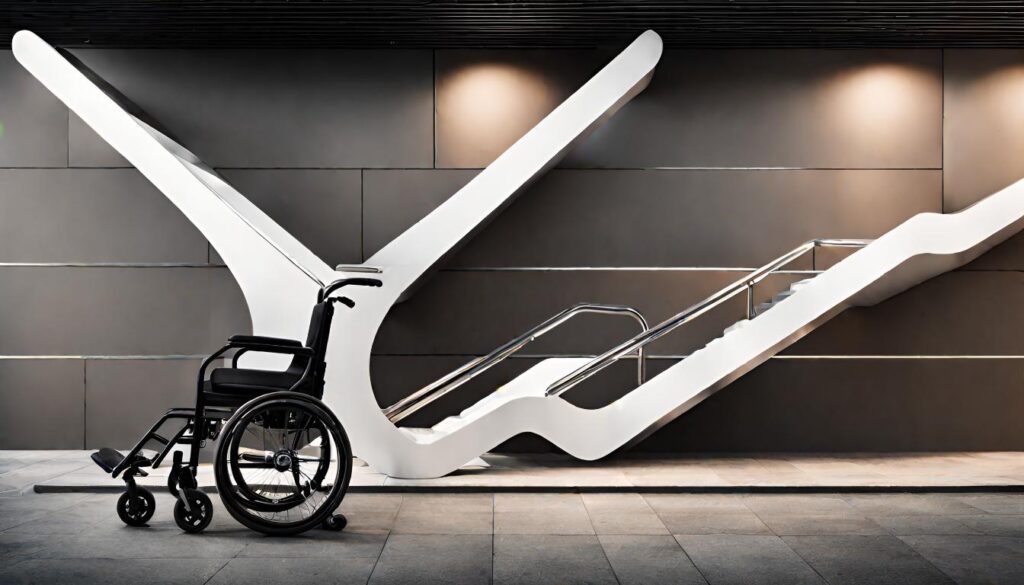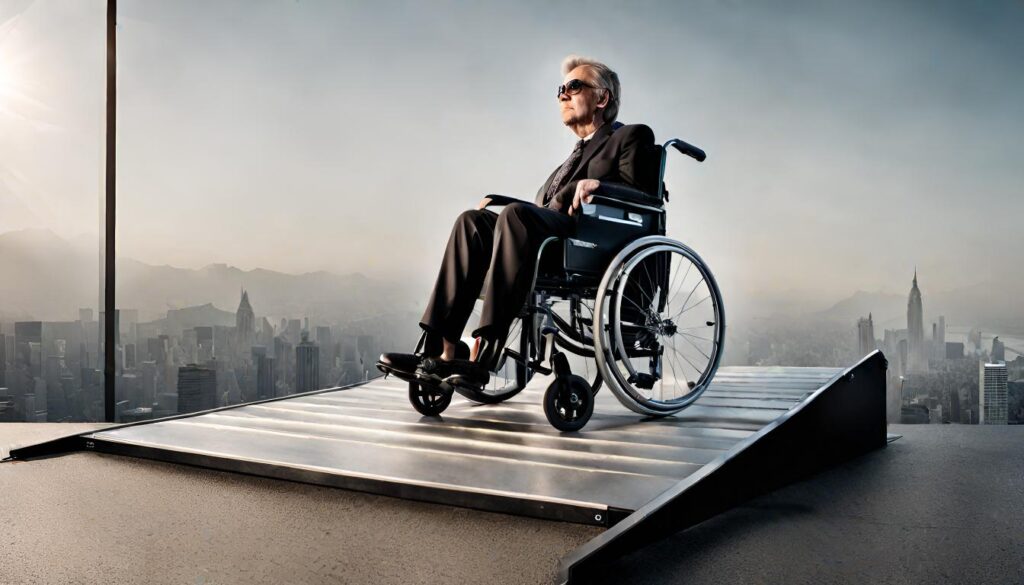
In our collective effort to create a more inclusive and accessible world, the significance of wheelchair ramps cannot be emphasized enough. These essential structures play a crucial role in ensuring that individuals facing mobility challenges can navigate public spaces with freedom and dignity. This guide explores the importance of wheelchair ramps, providing insights into their design considerations and the positive impact they have on the lives of people with disabilities.
Understanding the Need for Equal Access:
Wheelchair ramps are integral to the concept of universal design, breaking down physical barriers and providing equitable access to all. Whether in public buildings, private residences, or recreational areas, the installation of ramps promotes inclusivity, empowering individuals with mobility impairments to actively engage in society.

Navigating Legal Requirements: Recognizing the importance of accessibility, many countries have implemented legal mandates to ensure that public spaces are wheelchair-friendly. For instance, the Americans with Disabilities Act (ADA) in the United States mandates the provision of accessible routes, including ramps, to accommodate individuals with disabilities. These legal requirements underscore a societal commitment to fostering an inclusive environment.
ACCESSIBILITY MATTERS:
IMPROVING SPACES FOR ALL.
Designing Effective Wheelchair Ramps: Crafting wheelchair ramps involves careful planning and adherence to specific design principles. Considerations such as slope, landing size, handrails, and surface materials are pivotal for functionality and safety. Ramps should feature a gradual slope for ease of use, supplemented by handrails for enhanced stability. The chosen materials must be durable, slip-resistant, and capable of withstanding various weather conditions and also at a discounted rates.
Incorporating Accessibility in Public Spaces and Businesses:
Public spaces and businesses that prioritize accessibility not only comply with legal requirements but also contribute to a positive and inclusive image. Installing wheelchair ramps showcases a commitment to social responsibility, enhancing the overall experience for all patrons, irrespective of their physical abilities. This inclusivity can lead to increased customer satisfaction and loyalty.

ACCESSIBILITY MATTERS
ACCESSIBLE ENTRANCES FOR ALL
Extending Accessibility to
Residences:
Wheelchair ramps are not confined to public spaces; they are equally crucial in residential settings. Installing ramps at home empowers individuals with mobility challenges to move freely and independently, thereby improving their quality of life and fostering a sense of autonomy and self-reliance.
We believe everyone deserves equal access to public spaces. That’s why we installed this wheelchair ramp.
#Accessibility #Inclusion
Let’s make our spaces accessible for all.

The primary advantage of wheelchair ramps is that they provide a means for individuals with mobility impairments to access buildings and spaces easily. This promotes inclusivity and equal opportunities for people of all abilities.
Compliance with Regulations: Installing wheelchair ramps ensures compliance with accessibility regulations and standards, such as the Americans with Disabilities Act (ADA). This legal adherence reflects a commitment to creating an inclusive environment.
Independence and Empowerment: Wheelchair ramps empower individuals with disabilities by allowing them to move independently. This autonomy contributes to an improved quality of life, fostering a sense of self-reliance and dignity. Versatility in Design:
Wheelchair ramps come in various designs to suit different architectural styles and space constraints. This versatility allows for customized solutions that can be integrated seamlessly into existing structures. The structure must be handy and portable for this Ruedamann help you in guiding 3 steps and different features.
- Safety Features:
Well-designed ramps include safety features such as handrails, non-slip surfaces, and gradual slopes. These elements enhance user safety, reducing the risk of accidents or injuries during ascent and descent.
Convenience for Caregivers: Wheelchair ramps not only benefit individuals with mobility challenges but also ease the task for caregivers and family members. This convenience contributes to a more supportive and inclusive living environment.

Cons:
Space and Design Limitations:
In some cases, space constraints or the design of existing structures may make it challenging to install a wheelchair ramp. This limitation can pose difficulties in achieving full accessibility.
Cost of Installation:
Constructing a wheelchair ramp, especially in existing structures, can be costly. The expenses may include materials, labor, and potential modifications to the building, making it a significant financial investment.

Maintenance Requirements:
Wheelchair ramps, like any outdoor structure, require regular maintenance. Exposure to weather conditions can lead to wear and tear, necessitating upkeep to ensure the ramp remains safe and functional. Aesthetic Concerns:
In some cases, the installation of wheelchair ramps may be perceived as altering the aesthetics of a building. Striking a balance between functionality and maintaining the architectural integrity can be challenging.
Installation Time:
The construction of wheelchair ramps may take time, causing temporary disruptions to the normal functioning of the space. This can be an inconvenience for occupants during the installation period.
Potential for Improper Installation:
If not properly designed and constructed, wheelchair ramps can pose safety risks. Poorly installed ramps may have steep slopes, lack proper handrails, or have slippery surfaces, compromising user safety.
Conclusion:
The integration of wheelchair ramps in commercial spaces transcends a mere fulfillment of legal obligations; it represents a strategic investment. By prioritizing accessibility, businesses unlock the potential to engage a broader customer base, elevate their reputation, and cultivate an inclusive environment. However, the installation of wheelchair ramps necessitates thoughtful consideration of design, materials, and regulatory compliance. Through collaboration with industry professionals, businesses can establish a safe and accessible environment that extends a warm welcome to all individuals, regardless of their mobility challenges. Ultimately, investing in wheelchair ramps underscores a commitment to equality, opening doors to diverse clientele and generating a positive impact within the community.





